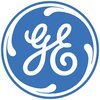OJT
OJT Interview Questions and Answers

Asked in GE Aviation

Q. What is first law of Newton ? What is definition of Force?
First law of Newton states that an object at rest will remain at rest, and an object in motion will remain in motion at a constant velocity, unless acted upon by an external force. Force is a push or pull on an object that can cause it to accelerate or change direction.
First law of Newton is also known as the law of inertia
Force is measured in Newtons (N)
Examples of force include gravity, friction, and tension
Force can be represented by vectors, with magnitude and direction
Fo...read more

Asked in ArcelorMittal Nippon Steel

Q. For chemical engineering Types of pumps& working Modes of heat transfer Heat transfer &mass transfer co efficient Some basic basic questions asking not dipper questions asking
Types of pumps include centrifugal, reciprocating, and rotary pumps. Heat transfer modes include conduction, convection, and radiation.
Types of pumps: centrifugal, reciprocating, rotary
Heat transfer modes: conduction, convection, radiation
Heat transfer coefficient: measure of how well a material transfers heat
Mass transfer coefficient: measure of how well a material transfers mass

Asked in ArcelorMittal Nippon Steel

Q. What is the process of steelmaking?
Steelmaking is the process of producing steel from iron ore and/or scrap metal through various methods such as blast furnaces or electric arc furnaces.
Iron ore is first mined and then processed to remove impurities.
The purified iron ore is then combined with coal and limestone in a blast furnace to create molten iron.
The molten iron is further processed to remove impurities and adjust the carbon content to create steel.
Alternatively, scrap metal can be melted in an electric a...read more

Asked in ArcelorMittal Nippon Steel

Q. Driving force of heat and mass transfer
The driving force of heat and mass transfer is the difference in temperature or concentration between two points.
Temperature difference drives heat transfer - for example, hot coffee cooling down in a room
Concentration gradient drives mass transfer - for example, diffusion of perfume in a room

Asked in ArcelorMittal Nippon Steel

Q. Types of pumps & valve used industry
Various types of pumps and valves are used in industries for different applications.
Types of pumps: centrifugal pumps, positive displacement pumps, diaphragm pumps, gear pumps
Types of valves: gate valves, globe valves, ball valves, butterfly valves
Pumps and valves are used in industries such as oil and gas, water treatment, chemical processing
Each type of pump and valve has specific characteristics and applications

Asked in ArcelorMittal Nippon Steel

Q. Types of mod of heat transfer
There are three main modes of heat transfer: conduction, convection, and radiation.
Conduction: Heat transfer through direct contact between particles. Example: Touching a hot stove.
Convection: Heat transfer through the movement of fluids (liquids or gases). Example: Boiling water.
Radiation: Heat transfer through electromagnetic waves. Example: Sunlight warming the Earth.

Asked in Rashmi Group

Q. Thermodynamics law's
Thermodynamics laws govern energy transfer and transformation in physical systems.
First law of thermodynamics states that energy cannot be created or destroyed, only transferred or converted.
Second law of thermodynamics states that the entropy of an isolated system always increases over time.
Third law of thermodynamics states that as temperature approaches absolute zero, the entropy of a system approaches a minimum value.
Examples: A car engine converting fuel into mechanical ...read more
Interview Experiences of Popular Companies








Reviews
Interviews
Salaries
Users

















